Olive plants are easily one of the most versatile plants in the world. Humans have been growing, harvesting, and indulging in olives for thousands of years.
We use them to grow the bitter fruit we enjoy and also for their oil.
However, not all olive trees are the same.
Currently, there are approximately 800 million olive plants growing around the world so as you would expect they can vary a lot.
Some olive trees bear fruits we can eat whilst others still flower but are fruitless.
With so many different varieties on offer, it can be difficult to know what olive plant we are looking at, and whether or not it bears any fruit.
If you’re a keen gardener or simply love all things plants this can cause problems, especially if you are hoping to grow your own olives.
To help you out we have put together a list of the most popular varieties of olives.
By the end you should have a better understanding of the types of olive plants available and if you can grow them in your own backyard.
1. Arbequina
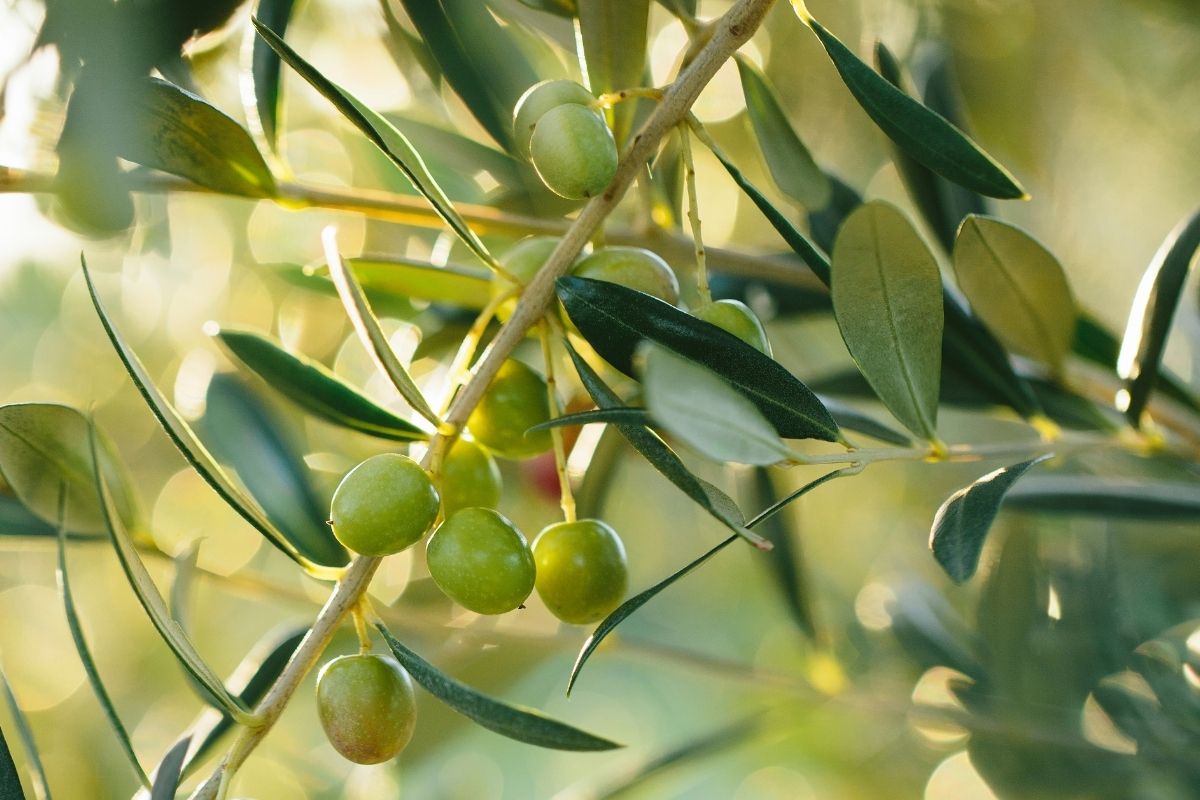
This type of olive plant is one of the larger varieties, though you can keep it smaller with regular pruning.
Requiring full or partial sun this popular olive from Catalonia, Spain has weeping branches and silvery leaves that hold their color all year round.
This plant can grow to 20 feet tall with a diameter of 12 feet. It bears dark brown high aromatic symmetrical olive fruits.
2. Picholine
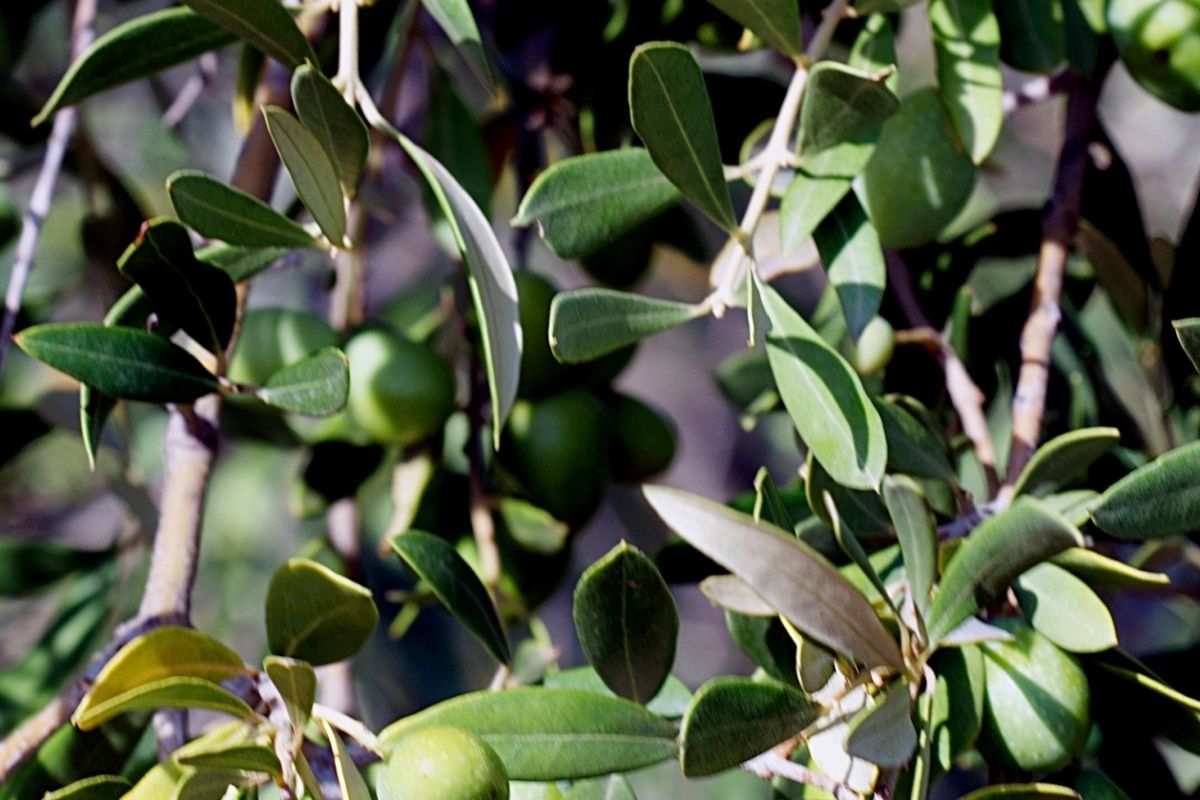
The picholine olive plant is a good choice if you want a simple plant you can grow in containers. This French plant produces green crunchy olives that have a spicy, nutty taste.
Originating in Southern France this variety of olive is actually the most consumed across the European country.
Growing best in full sun, the picholine plant can reach 30 feet tall, but like the arbequina plant can be kept smaller.
If you’re eating the olives, use them when they’re green. If you want to make olive oil, wait until they have matured and are black in color.
3. Wilsonii

One of the most beautiful ornamental olive plants is the wilsoni. Though this plant is fruitless it still has a beautiful trunk and leaves a fruiting olive plant would have.
The easy-to-grow evergreen is a big hit with homeowners who want a beautiful tree that requires little maintenance.
Once established it is drought tolerant and can handle cold climates well. Typically growing to 25 feet tall this plant has a dense crown with willowy green foliage.
4. Gordal Sevillano

This Spanish olive plant can be grown in USDA growing zones 8-11 which covers most of the Pacific Northwest.
This olive tree has an attractive willow-like appearance, growing to 30 feet tall and producing a firm, round olive that has a soft texture.
The fruit of this tree is often eaten as a snack or stuffed with cheese. Looking great in a range of landscapes the trunk only looks better as it matures.
5. Chemlali

The next olive plant on our list is a little lesser-known and is probably also the most compact plant on our list.
Native to Tunisia the small size of the chemlali plant makes it a good option for smaller gardens.
It requires full sun to grow but is colder tolerant than most, tolerating temperatures around Southern Oklahoma well.
Primarily used to make olive oil, this bush-like plant is also frequently used as an ornamental plant.
6. Nicoise
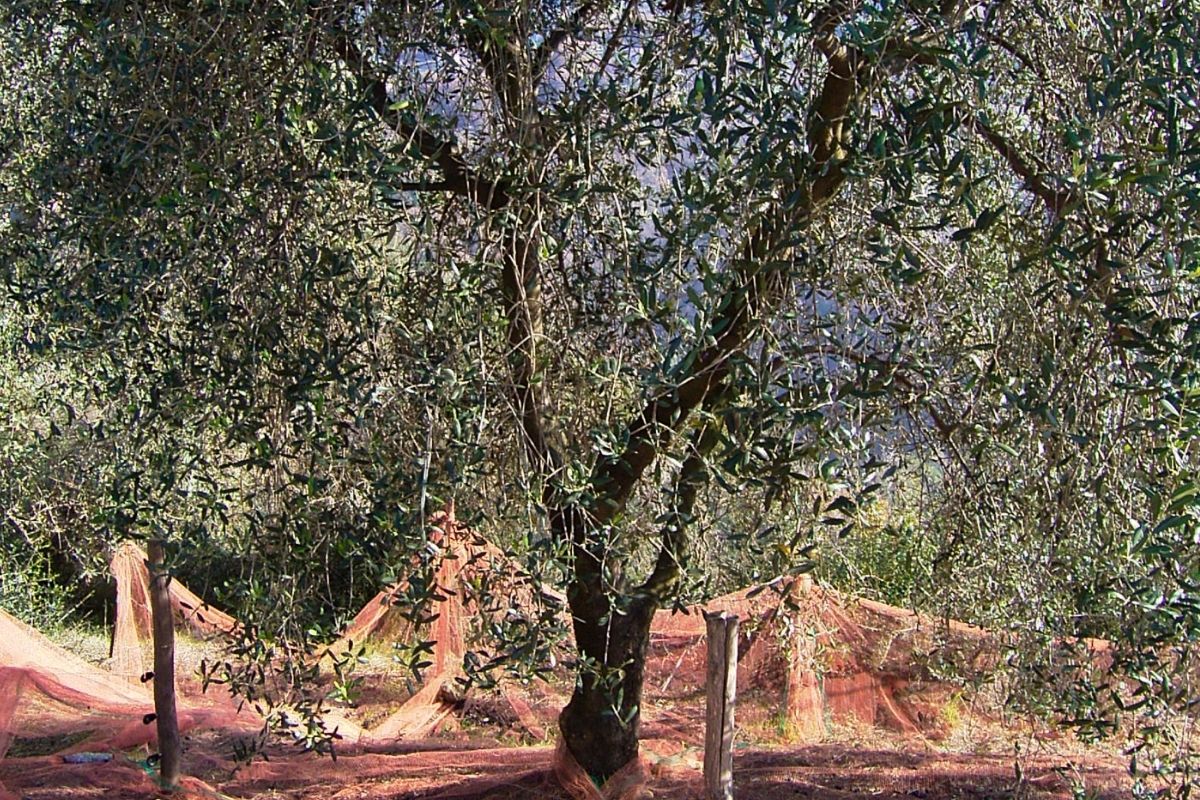
Popular in France but easily growable across America, the Nicoise olive is fond of hot, dry climates.
They have long, slightly weeping branches and green leaves that are a lot broader than most olive plant species.
The tree produces dark purple olives that are most typically used in a Nicoise salad. They have a powerful herbal smoky flavor that adds something different to the dish.
7. Manzanilla
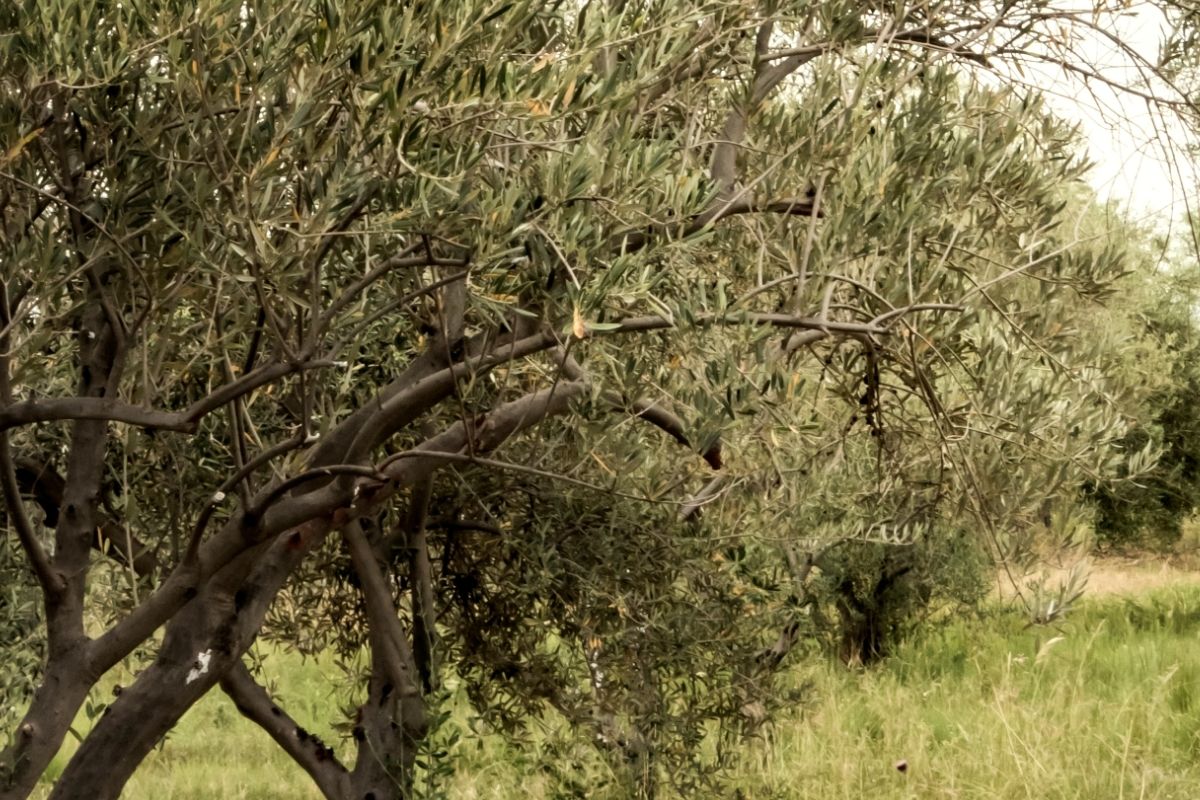
You will most definitely recognize the manzanilla olive plant as its fruit is the most popular olive consumed in the United States.
The Manzanilla olive tree is a stunning landscape plant with a bulging crown and an impressive gnarled trunk.
It is typically grown as a shade tree as well as for the large green olives it produces.
However, it is more susceptible to cold damage and diseases so be careful when trying to grow one successfully. Your best bet is to give it full exposure to the sun.
8. Hojiblanca
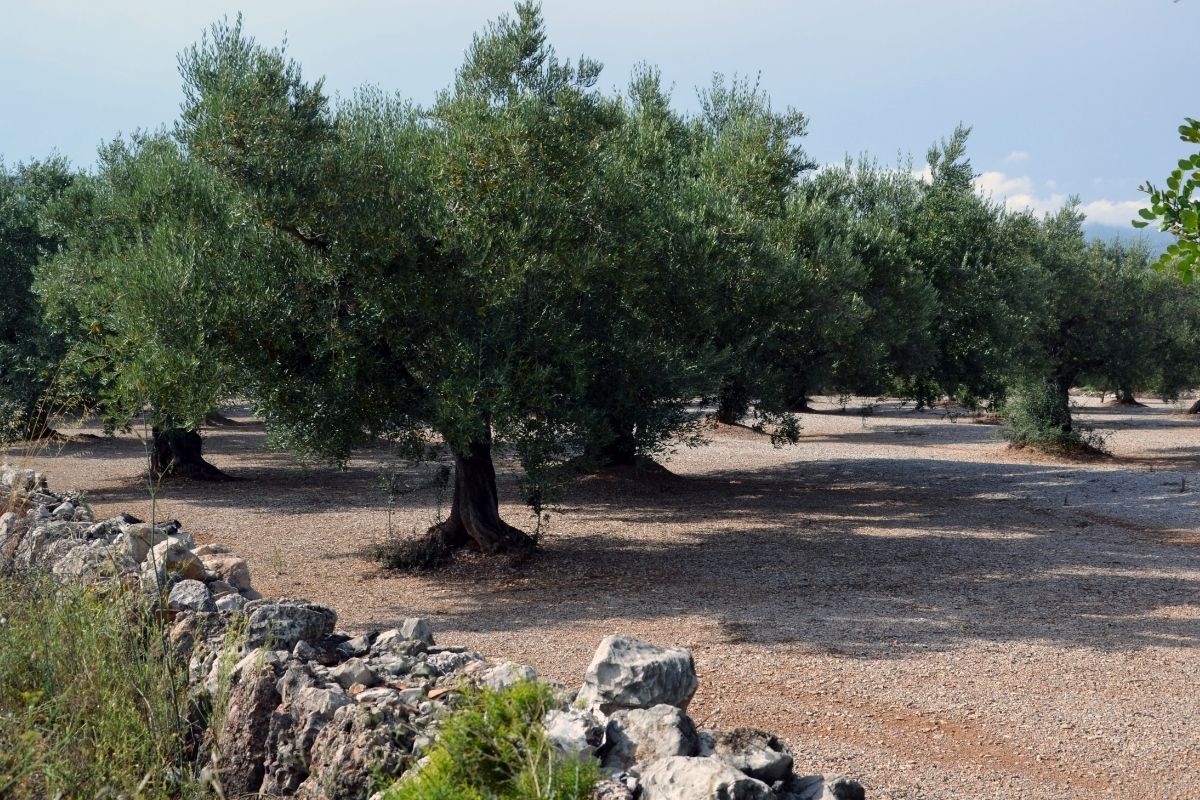
Named after the white backs of its leaves this is another Spanish variety of olive plant.
The fruits produced by the hojiblanca plant are highly sought after by culinary enthusiasts who use them to make outstanding olive oil and table-side olive dishes.
The tree itself is excellent not only because of its appearance but also due to its drought resistance, productivity, and tolerance to the winter cold.
The medium-sized plant has elongated branches and a dense crown where the small olives grow. The plant doesn’t require specific care, making it a good growing at home option.
9. Amfissa
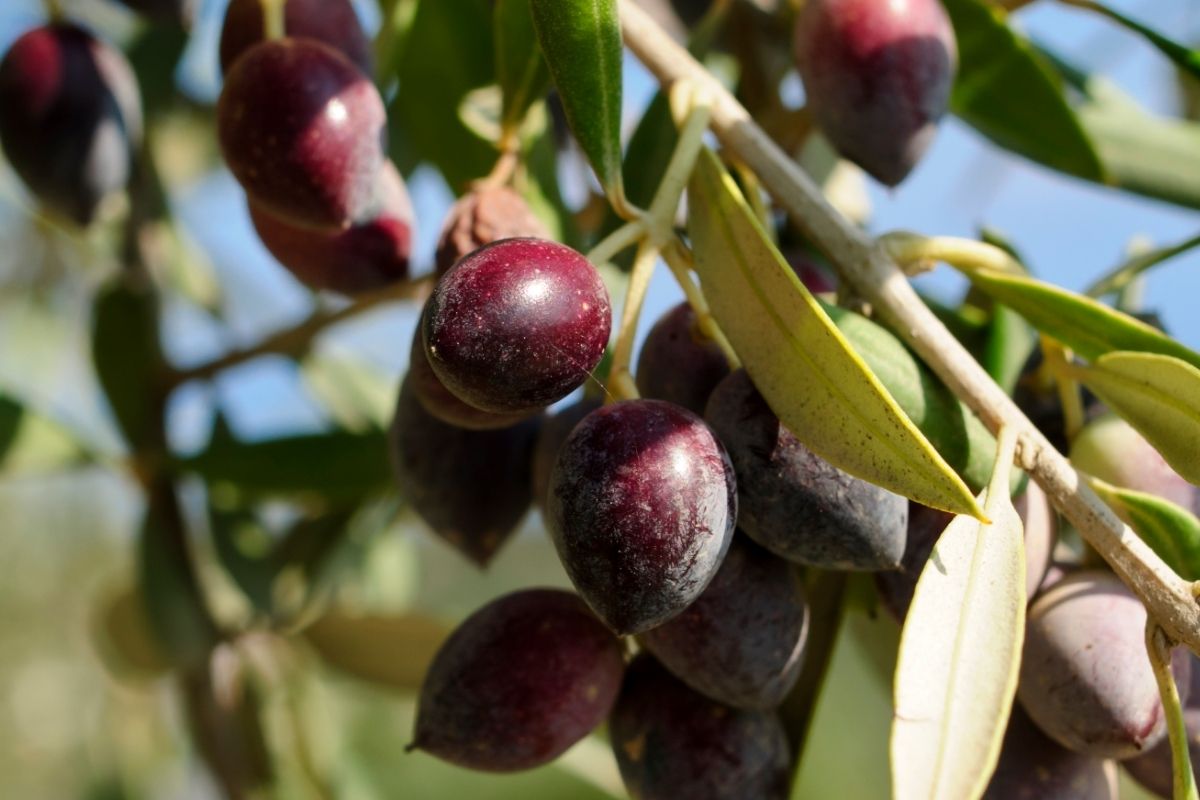
Originating in central Greece, the Amfissa olive tree produces brownish-purple fleshy olives that contain one seed.
These olives are usually cured in brine for a milder fruity flavor or a sharp citrusy taste.
Taking three to four years to produce any fruit, this quick-spreading plant grows up to 30 feet tall if not pruned and fully exposed to the sun.
The tree has broad, flat leaves with a dense canopy so it can also be used as a good shade tree.
10. Montra
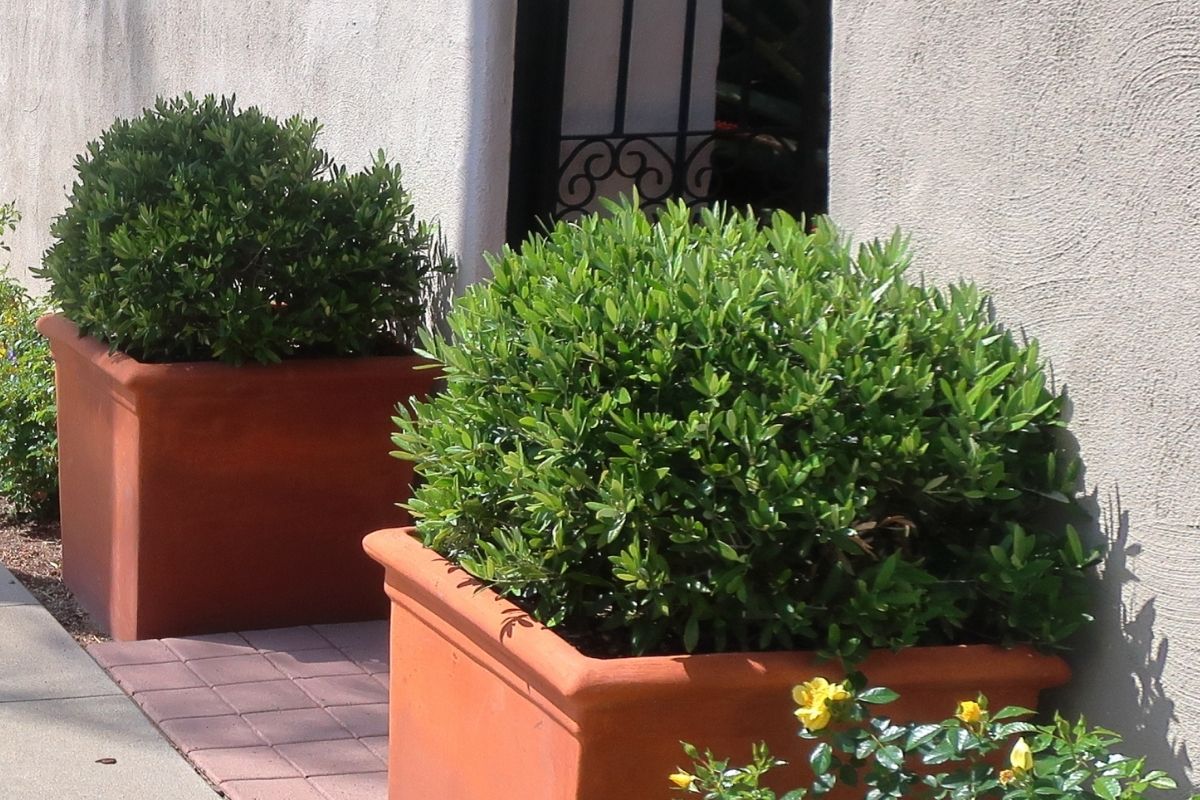
If you want to bring a Mediterranean feel to your garden consider planting a montra plant. Also known by the names “Dwarf olive” and “Little Ollie” this variety of olive plants is fruitless.
Ideal for growing in smaller yards or pots, the montra can grow up to 8 feet tall.
However, most people keep them smaller to create a hedge. The multi-stemmed bushy plant with deep dark green leaves needs good drainage and plenty of sun.
It will have a better appearance when planted deeper in rich soil.
11. Mission
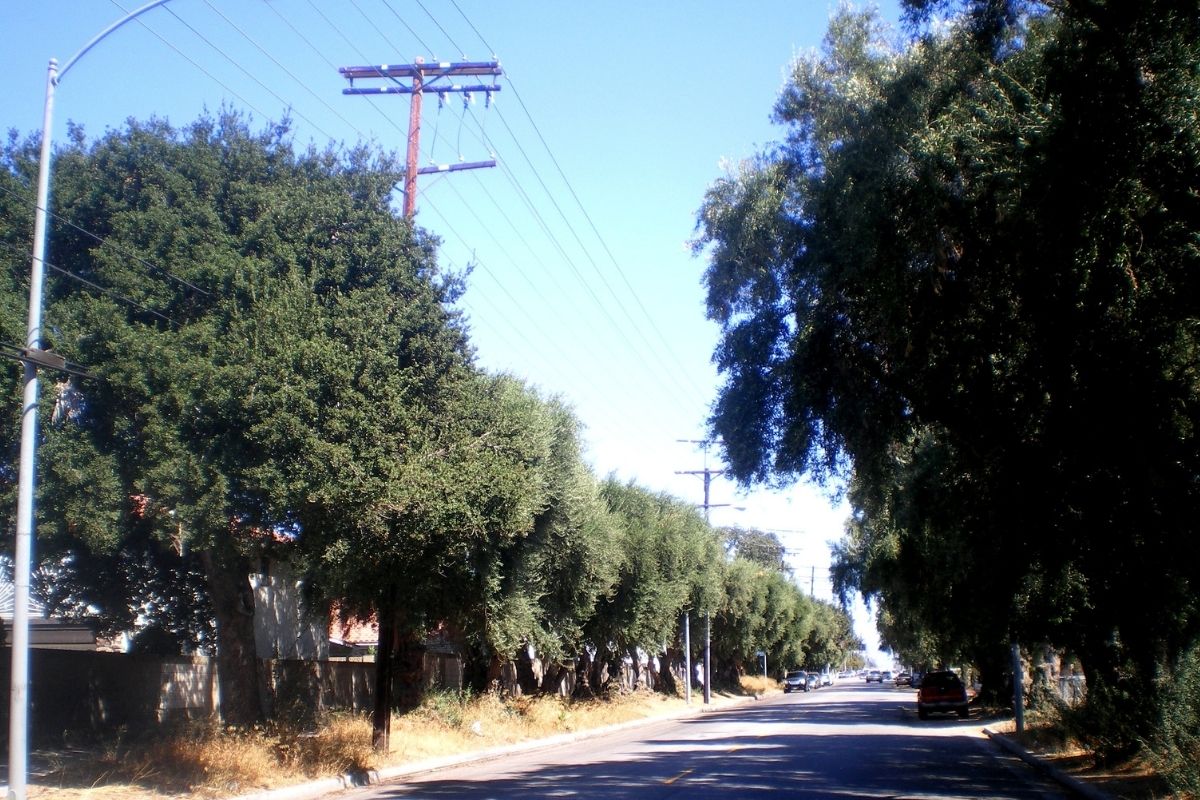
Originally developed in California in the 1700s, this olive is a historical type of olive plant that is actually the oldest olive tree in the United States.
It particularly thrives along the west coast, being seen in most yards throughout California.
With its high-yielding rate, it is a great option for those that want to start using homegrown olives.
Growing to heights of 50 feet the mission plant appreciates well-drained soil and full sun. It can also hold up pretty well to poor, rocky terrain and cold temperatures.
12. Nocellara del Belice
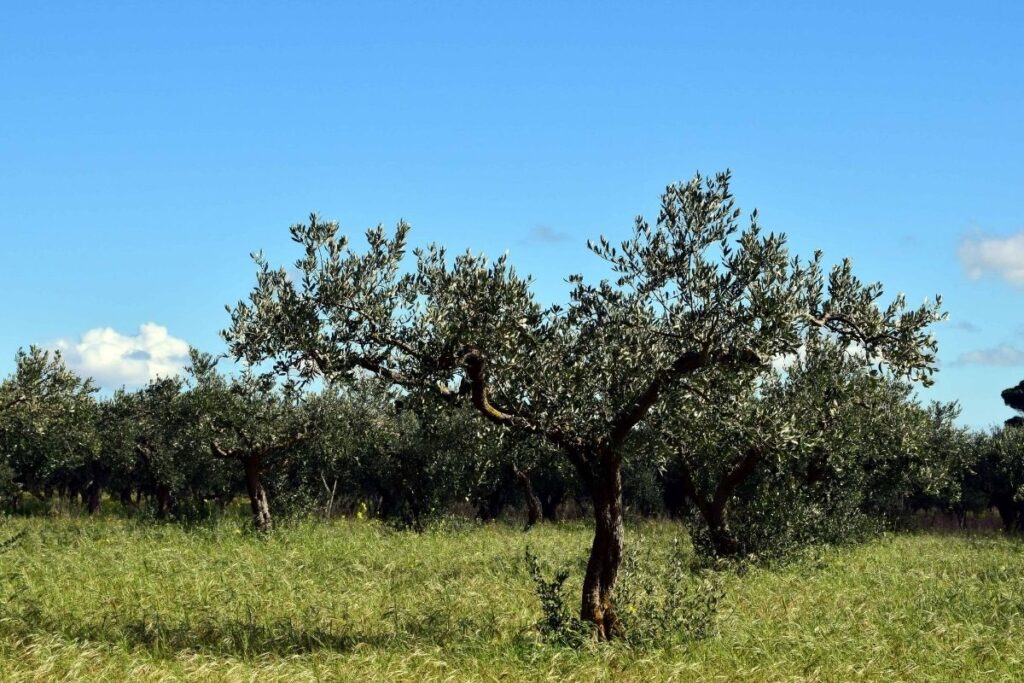
Image Source: Pixnio
The bright green olives from the Nocellara del Belice plant are not all this olive tree is known for.
With strong resistance to diseases and pests and a large dense crown, this plant also makes a fantastic shade tree that can be easily grown.
The smaller tree that only grows up to 20 feet tall is a wonderful ornamental plant but the olives are also super tasty.
Grown all around America, this olive plant’s fruit offers a mild flavor with a beautiful buttery texture.
13. Kalamata
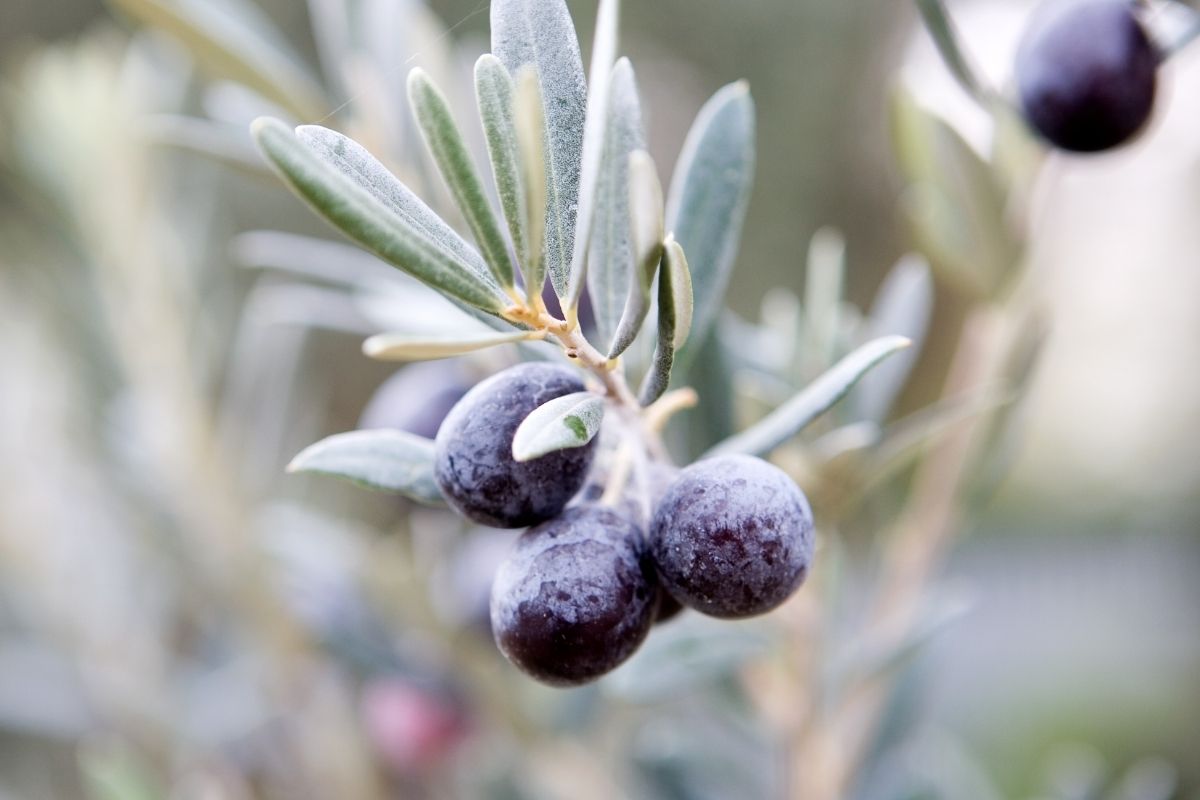
The Kalamata olive plant is perhaps one of the most iconic olives trees.
This Greek species of olive plant is a traditional ingredient in an array of Mediterranean dishes as well as being a symbol of peace. The medium to large-sized tree has lush green foliage.
It produces dark-purple-skinned, almond-shaped olives that are most commonly used in the production of olive oil, vinegar, or even better red wine.
The flavor of these olives is somewhat smoky which differs from other popular varieties of olive.
14. Frantoio

Native to Tuscany the frantoio plant grows to 25 feet tall and can be grown in USDA growing zones 8-11 which includes the Pacific Northwest, Hawaii, and Southern Florida.
The frantoio is an evergreen plant with greeny-gray foliage and a glossy texture. It produces dark purple-black drupes that are perfect for producing oil or a quick snack.
If you plant the frantoio plant you can expect olives in just 1 to 2 years.
15. Leccino
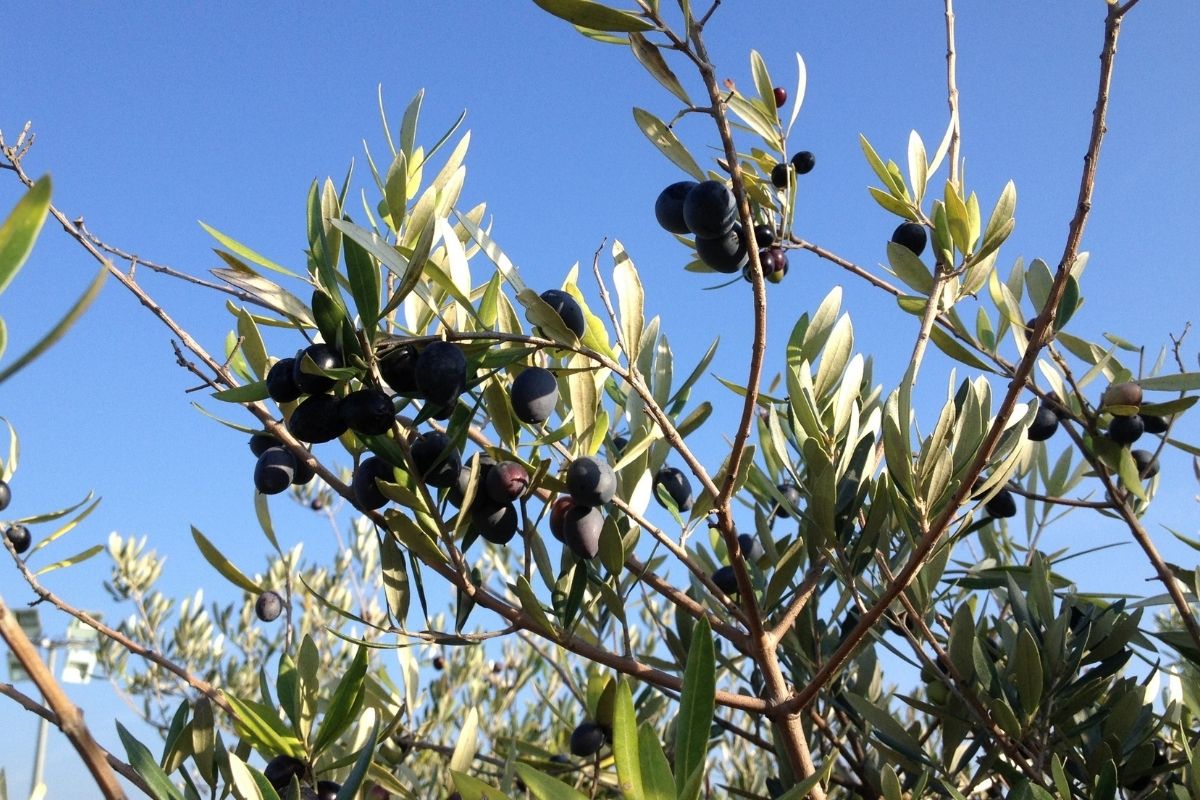
The Leccino plant is famous for its delicious large fruit, impressive weeping branches, and gnarled trunk. It is a medium-sized tree that loves the sun, but it can still grow successfully in temperatures as low as 12 degrees.
The plant will start to bear fruits not long after planting, in fact, you could see fruit within 1 year. If you want to start experimenting with olives quickly this plant is a great choice.
16. Coratina
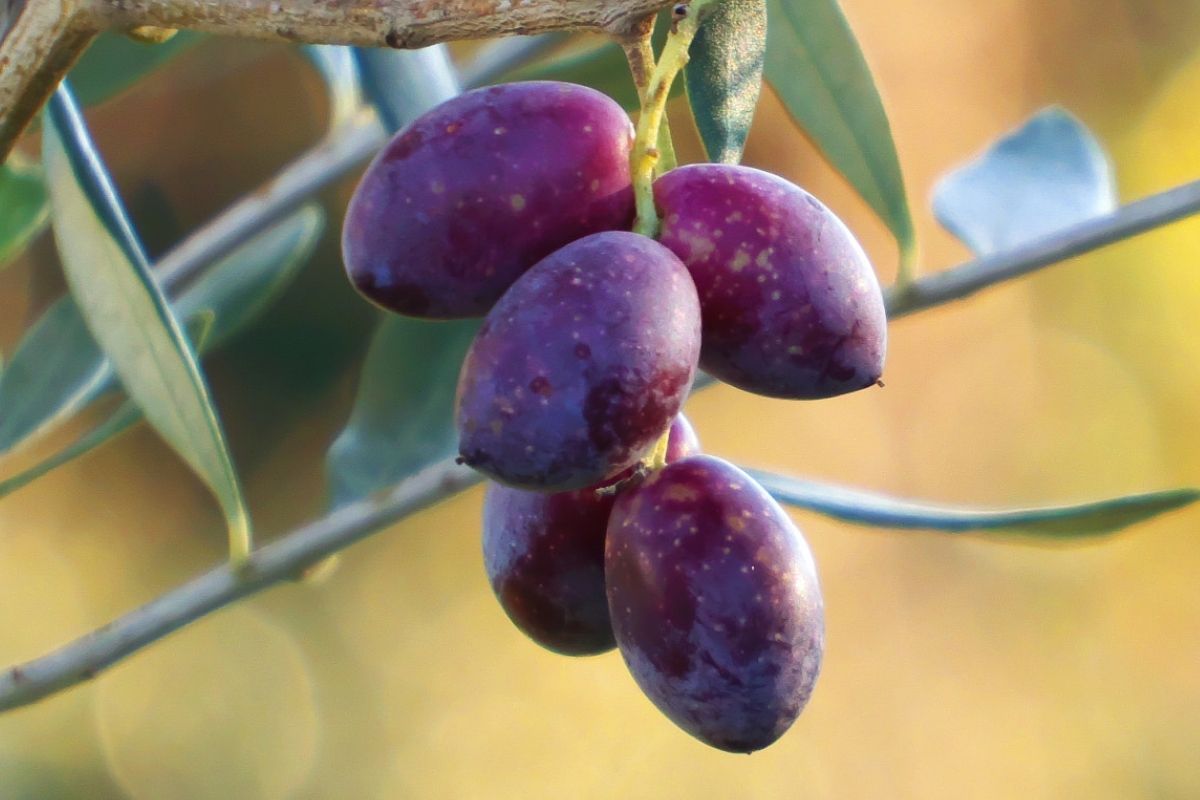
Image Source: Wikimedia Commons
The final olive plant on our list is the coratina olive tree.
The advantage to this olive plant is its ability to successfully grow in the most unforgiving environments with the harshest of terrains and poorest of soil conditions.
The most common use of the green and black fruit from this plant is pressing for olive oil. In terms of appearance, this tree has a pendulous trend shape and an elliptical leaf of average size and green color.
Thanks to its vigorous nature you can successfully grow the tree all over the U.S, even in the smallest yards with the poorest quality of soil.
Final Thoughts
From our list, which barely scratches the surface, you can see just how different varieties of olives can be.
Some grow wide and tall producing fruit regularly, while others grow short and compact, only producing fruit after four years if at all.
Growing olives can be super tempting and something you can’t wait to try but there are considerations that need to be taken into account.
The size, shape, and number of fruits the tree produces are just some of the things that need to be considered.
Whether you want to grow an olive tree for ornamental purposes or to use the fruit is completely up to you, but you need to make sure you find a plant that won’t outgrow your yard and can grow in the conditions we have discussed in this article.
Now you have our list at your disposal, are you considering planting an olive plant?
If you are, take our list and do some further research on the plants you like so you can find out exactly what you need to do to be successful. You will have a beautiful plant and some delicious olives in no time.







